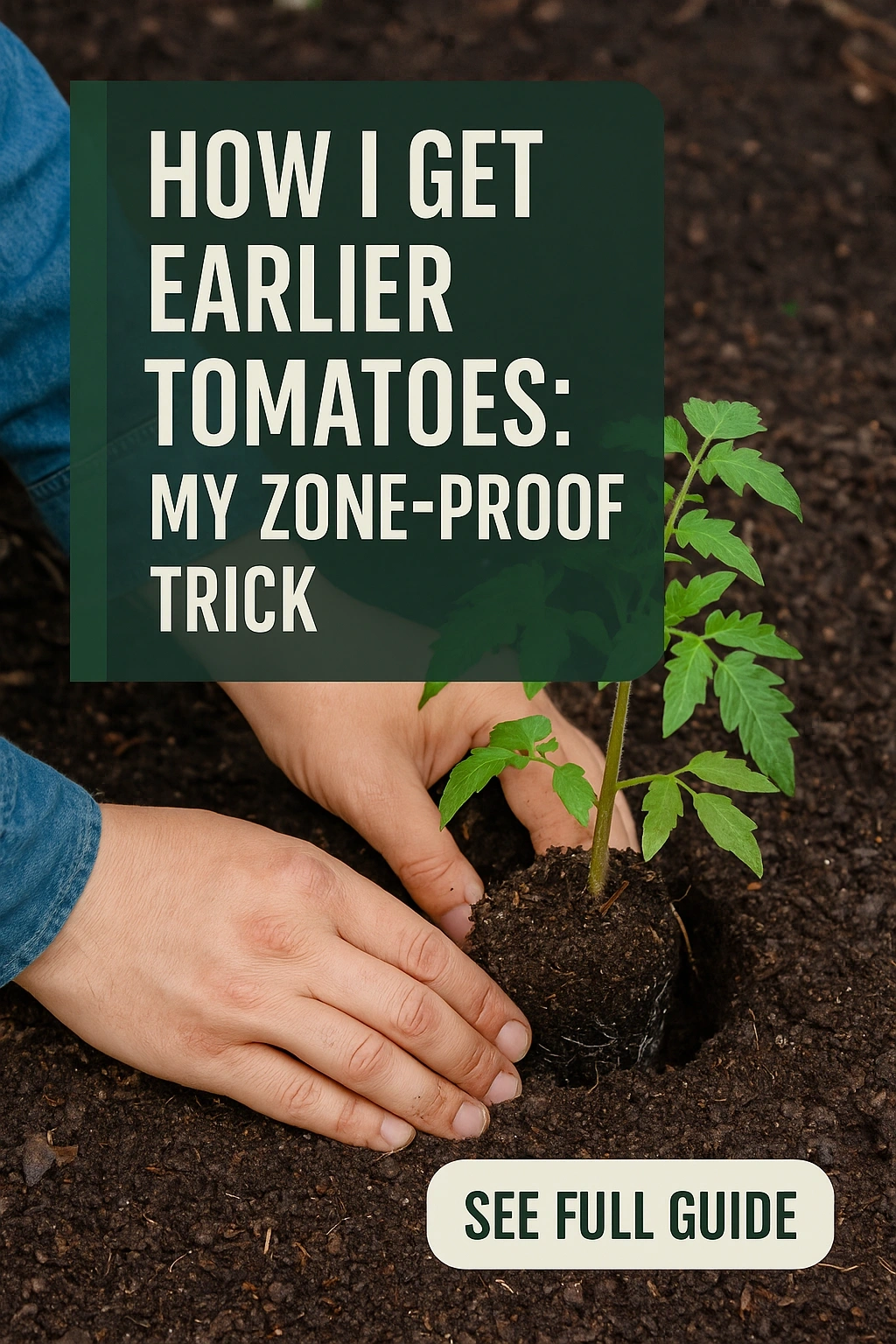
Growing tomatoes can be a rewarding endeavor, but waiting for the fruits to ripen can feel like a test of patience. If you’re eager to harvest earlier tomatoes, I have a game-changing trick that has transformed my gardening experience. By understanding your growing zone and implementing a few strategic techniques, you can enjoy the taste of homegrown tomatoes sooner than you ever thought possible.
Understanding Your Growing Zone
Before diving into the methods for getting earlier tomatoes, it’s essential to understand your USDA Plant Hardiness Zone. This classification helps you identify the best times for planting and harvesting based on your local climate. Each zone has its own average last frost date in spring and first frost date in fall, which is crucial information for tomato growers.
Choosing the Right Tomato Varieties
Not all tomato varieties are created equal when it comes to maturity time. Select early-maturing varieties that are bred specifically for quick growth. Look for types such as:
- Early Girl: A popular choice, producing ripe tomatoes in about 50 days.
- Sun Gold: A cherry tomato variety that ripens quickly and is known for its sweet flavor.
- Stupice: An heirloom variety that thrives in cooler conditions and matures early.
Preparing Your Garden for Early Tomatoes
Proper preparation of your garden can significantly impact your tomato yield and timing. Start by ensuring your soil is nutrient-rich and well-drained. Incorporate compost or well-rotted manure to boost soil quality. Additionally, consider the following strategies:
Utilizing Raised Beds
Raised beds warm up faster in spring compared to traditional garden plots. This warming effect helps to foster early growth, allowing you to plant your tomatoes sooner. Aim for a height of at least 12 inches to optimize drainage and root development.
Starting Seeds Indoors
Starting seeds indoors can give your tomatoes a head start. Begin the process about 6-8 weeks before the last expected frost date in your area. Use seed trays with quality potting soil, and provide ample light, either through natural sunlight or grow lights to ensure strong seedlings.
Implementing Protective Techniques
Once you’ve planted your tomatoes, consider protective techniques to shield them from cooler temperatures. This can make a substantial difference in their growth and ripening times.
Using Row Covers
Row covers provide a protective barrier against frost and cold winds while allowing sunlight to penetrate. Lightweight fabrics can be placed over your plants during chilly nights and removed during the day. This method traps heat and promotes earlier growth.
Employing Wall-O-Water
Wall-O-Water is a unique gardening tool that consists of a series of water-filled tubes. When placed around young plants, it creates a mini greenhouse effect, providing warmth and protection from the elements. This technique can significantly boost early tomato growth.
Watering and Fertilization Strategies
Proper watering and fertilization are crucial components in the quest for earlier tomatoes. Plants that receive the right nutrients and hydration will grow more robustly and produce fruit sooner.
Consistent Watering Schedule
Tomatoes prefer consistent moisture, so establish a regular watering schedule. Water deeply but infrequently to encourage deep root growth. Early in the season, ensure that the soil remains moist but not waterlogged.
Using Slow-Release Fertilizers
Incorporate slow-release fertilizers into your soil at planting time. These fertilizers provide a steady supply of nutrients, which aids in the quick growth of your plants. Look for fertilizers that are high in phosphorus, as this nutrient promotes flowering and fruiting.
Monitoring for Pests and Diseases
Early-season pests and diseases can hinder your tomato growth and yield. Regular monitoring and preventive measures are essential to keep your plants healthy.
Regular Inspections
Check your plants regularly for signs of pests like aphids, spider mites, and whiteflies. Early detection allows for immediate action, ensuring your tomatoes remain healthy. Use insecticidal soaps or neem oil as organic solutions for pest control.
Promoting Airflow
Ensure your plants are spaced adequately to promote good airflow. This helps to prevent fungal diseases that thrive in humid conditions. A spacing of 18-24 inches between each plant is typically recommended.
Harvesting Your Tomatoes
Once your tomatoes begin to ripen, knowing the right time to harvest is key to enjoying their full flavor. Picking them at the right stage can enhance your culinary experience.
Identifying Ripeness
Tomatoes will change color depending on the variety as they ripen. Look for a rich, deep color and slight softness when gently squeezed. If you’re uncertain, it’s better to pick them slightly underripe and allow them to ripen off the vine, as this can prevent loss to pests or diseases.
Storing Your Harvest
Once harvested, store tomatoes at room temperature away from direct sunlight. Avoid refrigeration, as it can alter their taste and texture. Enjoy them fresh, or use them in your favorite recipes for a taste of summer any time of year.
Frequently Asked Questions
What is the best tomato variety for cold climates?
In cold climates, look for varieties such as Stupice, Siberian, or Early Girl, which are known for their ability to thrive in cooler temperatures and mature quickly.
When should I plant tomatoes in my garden?
Generally, you should plant tomatoes after the last frost date in your area, but with techniques like starting seeds indoors and using row covers, you can plant earlier.
How can I tell if my tomatoes are ready to be picked?
Tomatoes are ready to be picked when they exhibit a deep color and are slightly soft to the touch. Picking them just before they are fully ripe allows for a longer storage life.
What should I do if my tomatoes aren’t ripening?
If your tomatoes aren’t ripening, consider providing them with additional warmth, ensuring they receive adequate sunlight, and checking for pests or diseases that may be hindering their growth.
Can I grow tomatoes in containers?
Yes, tomatoes can be successfully grown in containers. Choose pots that are at least 5 gallons in size and ensure they have good drainage.
